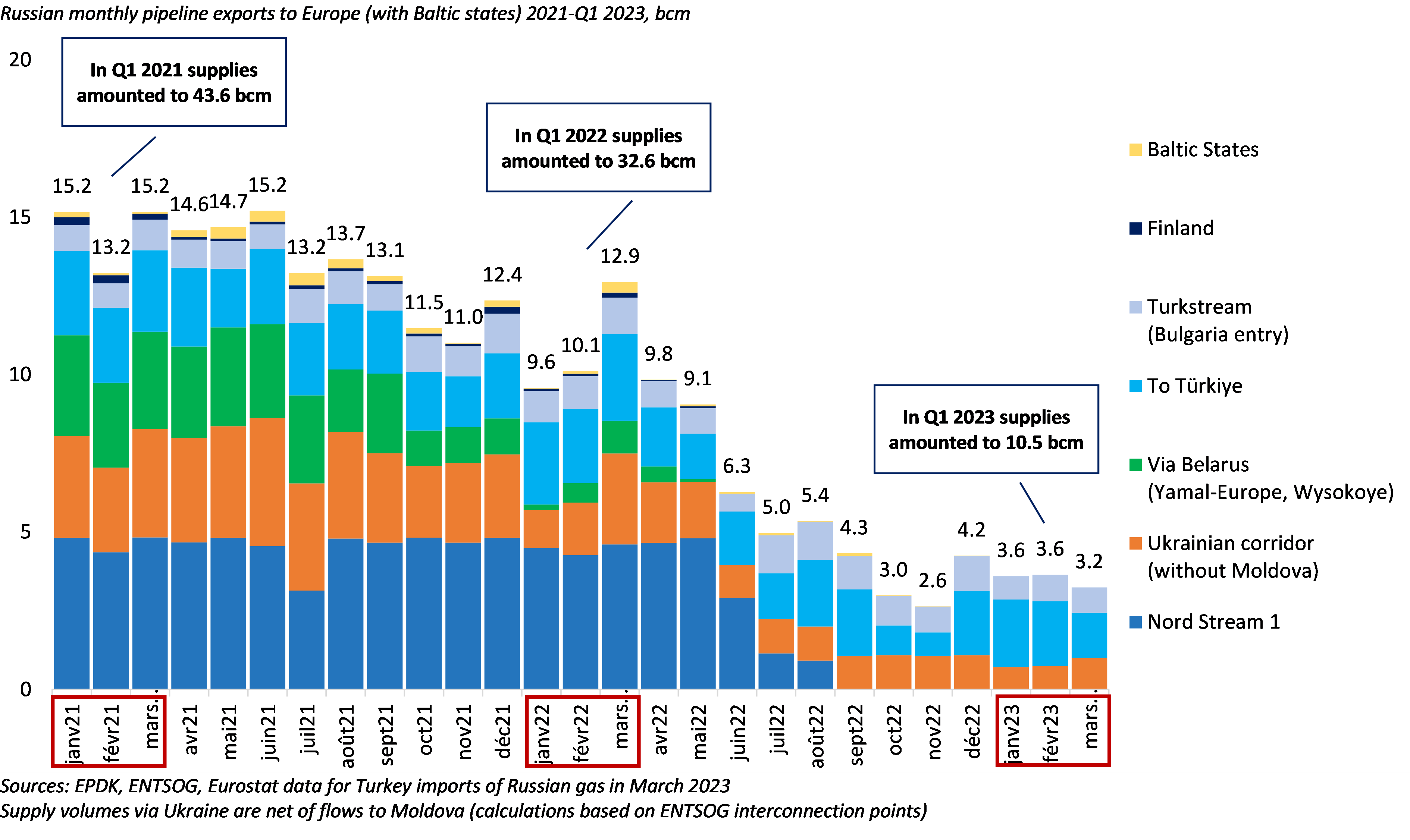An in-depth analysis of recent developments and prospects in Europe-Russia gas relations
With quality information from Russia getting increasingly scarce, the Russian natural gas market has become more and more of a black box. In its latest report “Russian gas in Europe: Yesterday, Today, Tomorrow. An in-depth analysis of recent developments and prospects in Europe-Russia gas relations”, CEDIGAZ tracks the unprecedented changes between glorious “yesterday” (2018-2021), gloomy “today” (2022-Q1 2023) of Russian gas (both pipeline and LNG) in Europe, including the evolution of the European countries’ dependence on Russian gas, using data still available. The report also discusses possible futures for Russian gas in Europe after 2023 (“tomorrow”) – given new inputs, including selected pipeline export routes limitations, the Turkish natural gas hub initiative, and Russian LNG project developments.
Yesterday
Russian pipeline gas exports to Europe peaked at the level of nearly 200 bcm in 2018-2019. Total supplies of Russian gas to Europe (with Russian LNG volumes added) reached an all-time high of 210 bcm in 2019. Given the global gas consumption of around 3900 bcm in 2018-2019, and the share of natural gas in global energy consumption (roughly a quarter) Russian gas flows to Europe at their highs represented more than 5% of global gas consumption and more than 1% of global energy demand respectively.
The bulk of gas produced in the world is consumed locally and is not part of international gas trade, the latter amounting to only 1200-1300 bcm per year in 2018-2019. Thus, Russian gas flows to Europe at their heights constituted over 15% of global trade. Without doubt, Russian gas exports to Europe have long been the key inter regional gas flow, affecting – directly or indirectly – all regions involved in global gas trade.
Today
In 2022, Russian pipeline gas exports to Europe drastically decreased – by over 80 bcm – which was the steepest decline in history of gas trade. It completely changed the European gas market, where Russian pipeline gas accounted for more than a third of demand in 2018-2021.
The Russian supplies drop has also caused profound repercussions on global gas and energy landscape in general. Year 2022 was marked by record gas prices at international hubs and unprecedented demand curtailments both in Europe and in emerging markets in Asia which could not afford costly LNG.

Tomorrow?
At the beginning of 2023 Russian gas exports to Europe still remain one of the main uncertainties for global gas supply-demand balance, in particular – for global LNG trade. In January 2023 Saad Sherida al-Kaabi, Qatar’s Energy Minister and head of world’s leading LNG exporter QatarEnergy, said that “Russian gas will eventually return to Europe” – an opinion which might be shared widely among the energy sector. In a way, the Qatari Minister was partly right even for year 2022, that witnessed a growth of Russian LNG flows to Europe which partly compensated pipeline flows decrease for some countries.
With Russian gas exports uncertainty looming over global gas market, some LNG project developers may understandably remain reluctant on FIDs. Any potential rebound of Russian pipeline gas to Europe in the future would exert downward pressure on the European gas prices Thus, getting hold of the current and future state of Russian gas supply to Europe is crucial for understanding global gas market perspectives.
The Russian Gas Sector has increasingly become a Black Box
Since the end of 2021, Russian government and Gazprom have been consistently limiting amount of information disclosed. From Q3 2021, Gazprom ceased to publish gas exports volumes by countries. In 2022 the Russian government allowed public companies to cut the volume of information disclosed in reports to “protect them from possible sanctions”. In Gazprom’s Annual Report 2021 (published in 2022) all potentially sensitive data regarding gas exports was removed. Gazprom’s investor events in 2022 were cancelled. Since the beginning of 2023, Gazprom has stopped publishing its half-month aggregate exports data. Finally, in February 2023 Russian Duma passed a law permitting the government to cease publishing official statistics.
Russian gas in Europe: Yesterday, Today, Tomorrow – An in-depth analysis of recent developments and prospects in Europe-Russia gas relations. Author: Alexander Kislov – PDF – 55 pages.
Pricing: free for CEDIGAZ members – €160 for non-members.
